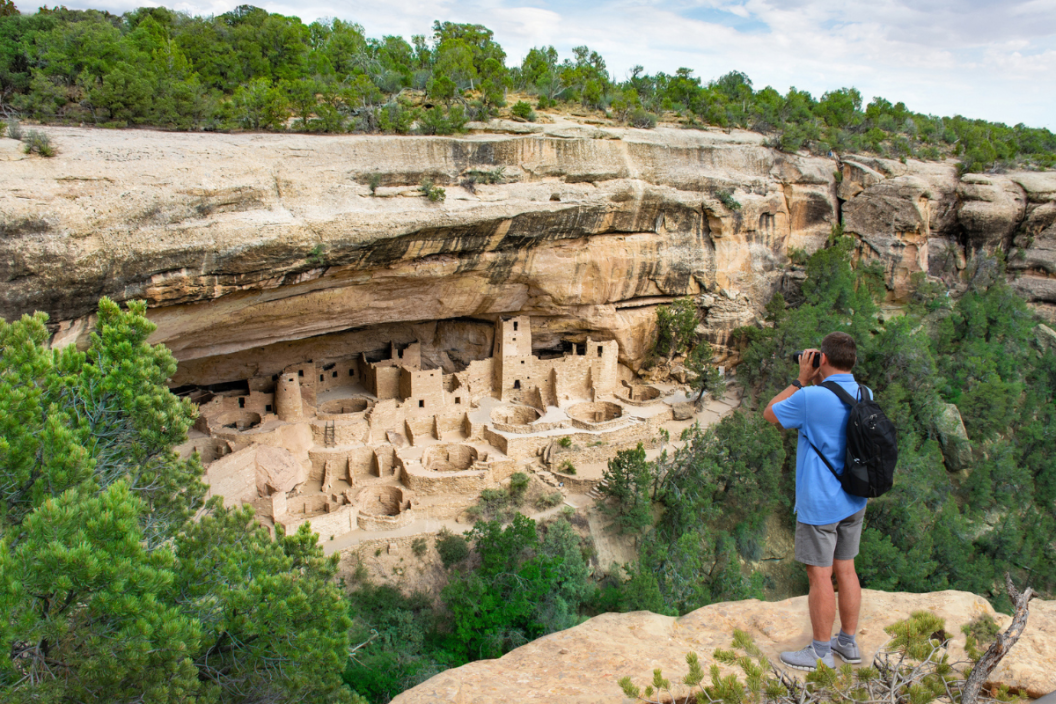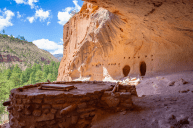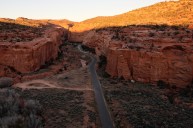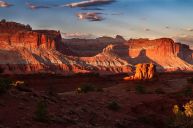A remarkable piece of Ancestral Pueblo history lies one hour from the Four Corners region where Colorado, Arizona, New Mexico, and Utah come together. Located on Ancestral Pueblo and Ute Native land, this UNESCO World Heritage Site is situated in modern-day Mancos, Colorado, just outside of Cortez.
This is Mesa Verde National Park, which boasts incredible cliff dwellings that date to approximately 1,500 years ago. These elaborate communities made of stone and the natural surroundings stand as a testament to the indigenous people's ingenuity, strength, and creativity.
History of Mesa Verde National Park
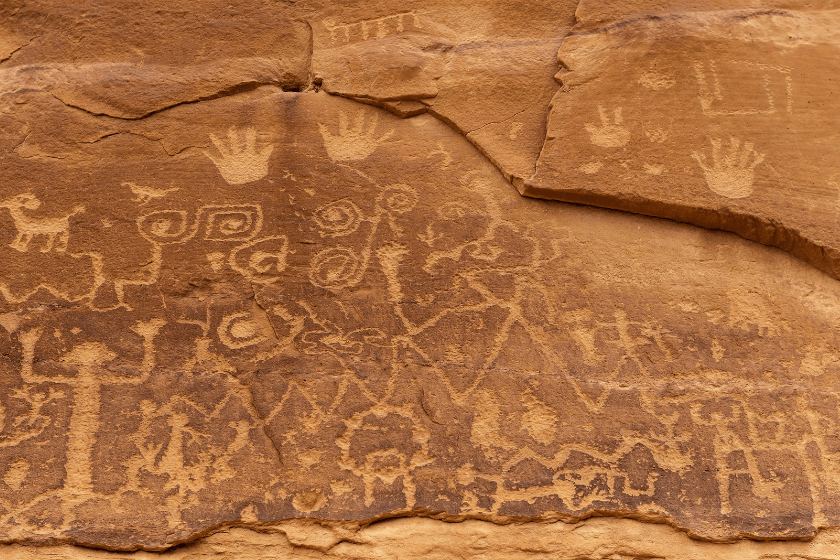
SL_Photography via Getty Images
Ancestral Natives first made Mesa Verde ("green table") their home around A.D. 550. They were skilled basketmakers and pottery markers (among other roles) who began farming and living a more settled life when they came to the area. They created small villages typically built on mesa tops and some like the cliff dwellings you see here.
In A.D. 750, when the population began to grow, the dwellings began to be above ground with walls made of poles and mud called "pithouses." These pithouses would eventually evolve into what we know as "kivas," and the people who lived in them called Pueblo or "village dwellers." Hundreds of years later, they began using masonry and more advanced methods to build structures for living.
In the late A.D. 1200s, the Pueblo people left their community. There is no written record on what happened or why, but the archeological sites they left behind demonstrate their accumulated skills and advanced civilization.
About the Cliff Dwellings
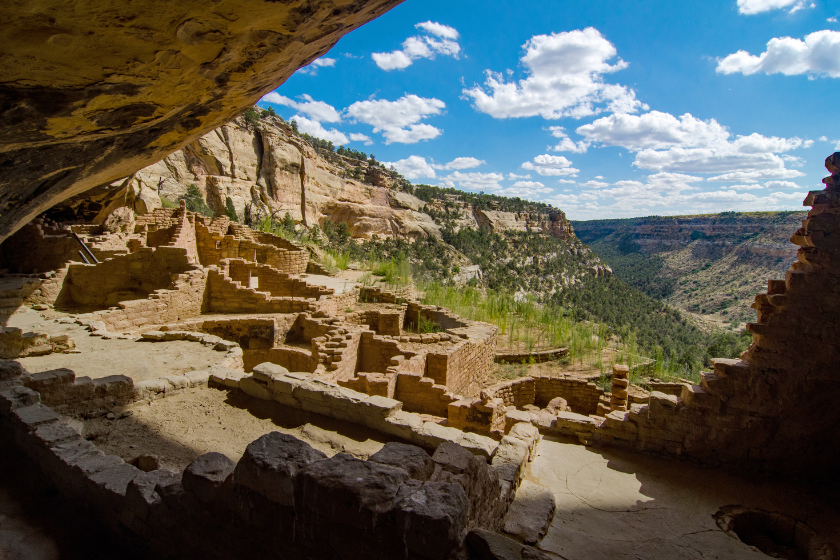
scgerding via Getty Images
The Pueblan people molded sandstone into brick-like blocks about the size of a loaf of bread. They then used them to construct the cliff dwellings, cliff palace, and other structures at Mesa Verde. They use a mixture of mud and water to create a mortar to fuse them together. A majority of the dwellings seem to be built from the late A.D. 1190s to the late A.D. 1270s.
The range of sizes is dependent on their use. For example, at Mesa Verde, we see larger structures like the Cliff Palace and Long House with around 150 rooms to the smaller one-room dwellings primarily used for sleep.
Discovering Mesa Verde

traveler1116 via Getty Images
There are many ways to explore the historic majesty of these ancient grounds when you visit. The most popular method is to take a guided tour with a park ranger. Almost all cliff dwellings (except for Step House on Wetherill Mesa) can only be entered on a tour.
If you want to guide yourself to learn about Mesa Verde, you can download the audio guide and take the Mesa Top Loop Road. This road is a 6-mile loop drive that has easily accessible paved trails to 12 different archeological sites with overlooks of the dwellings.
Cliff Palace

tudorish via Getty Images
RELATED: Visit Big Bend National Park's Network Of Trails
The architectural showpiece at Mesa Verde is Cliff Palace, which is the largest North American cliff dwelling. It was once home to over 100 people between the years 1190 and 1280 C.E. This guided tour is approximately 30 minutes long and composed of uneven stones and four ladders to traverse over.
Long House

SL_Photography via Getty Images
Long House is located on the less busy Wetherill Mesa side of the park and is the second-largest cliff dwelling. Take in breathtaking views of remote canyons on this 60-minute guided tour over 2.25 miles.
What To Do and See
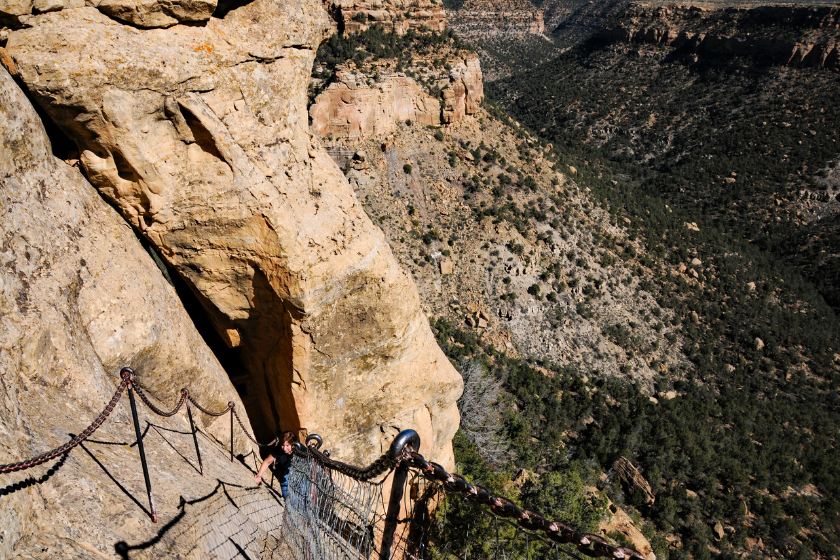
scgerding
The Spruce Tree House at the beginning of the Spruce Canyon Trail is the park's most well-preserved dwelling, but due to ongoing safety concerns around rock falls, this section is closed for the foreseeable future.
The Far View Sites are a less challenging three-quarter-mile stroll through a forest that connects mesa-top community farming villages.
Long House Loop is a beautiful 6-mile hiking or biking trail that allows access to the Badger House Community, Long House Overlook, and Kodak House Overlook.
Mesa Verde National Park Map
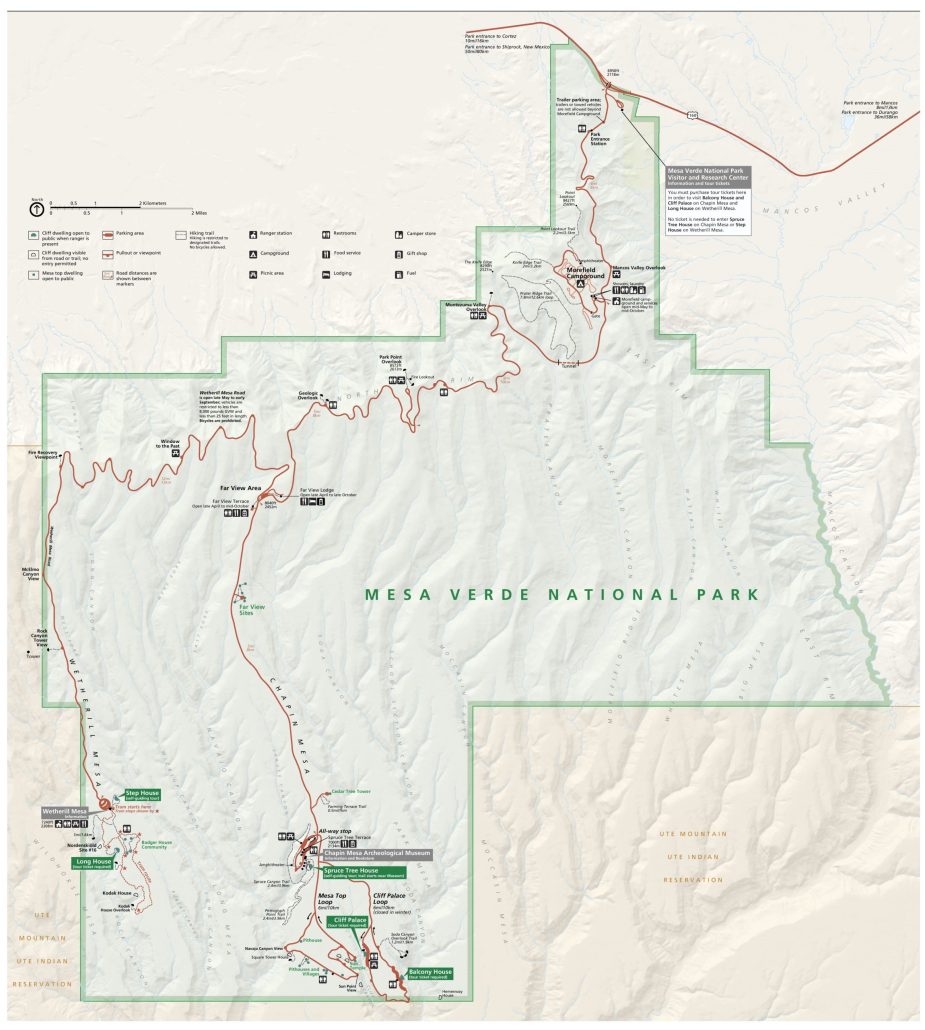
Point Lookout Trail is a 2.2-mile round trip hike that follows switchbacks on the backside of Point Lookout, where you can enjoy fantastic views of both Montezuma and Mancos valleys.
The Knife Edge Trail is also a 2-mile round-trip trail that traverses old Knife Edge Road from the northwest corner of Morefield Campground to the Montezuma Valley Overlook.
In Chapin Mesa, you can take a more challenging but fun trail 2.4 miles round-trip through a large petroglyph panel that is found 1.4 miles from the trail start.
The Soda Canyon Overlook Trail is a 1.2-mile round-trip adventure that starts one mile north of the Balcony House parking area. You can find interesting archeological sites and take in views of Soda Canyon and Balcony House.
The National Park Service (NPS) provides incredible Mesa Verde National Park maps that are highly suggested to use when wandering around the area. They point out features, show picnic areas, give history, and help you navigate your way through this incredible land.
Important Information For Your Visit
The park is typically open 24 hours a day, every day of the year. However, it has been experiencing seasonal hours and some closures lately. Be sure to check here or call and make sure they are open when you play to show up. Visit the FAQ page for more answers to regularly asked questions. The park entrance fee varies depending on age, time of visit, and type of vehicle.
Ever visited this stunning Colorado national park? Share your journey at our Wide Open Roads Facebook!
